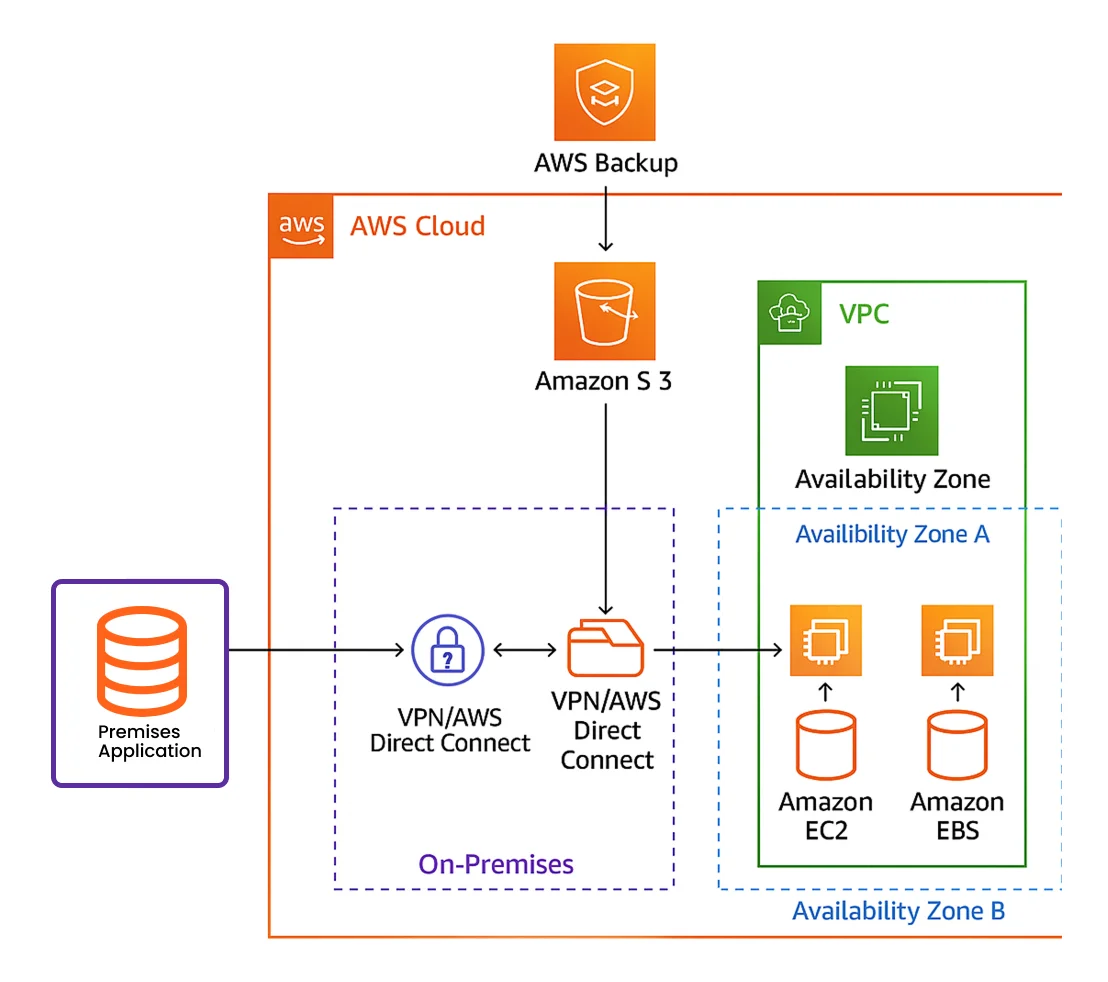Automated Backup and Disaster Recovery on AWS for Wasserstoff’s On-Premise Systems


Short Description
Revolutions.ai helped Wasserstoff, a growing manufacturing business with legacy systems, transition from error-prone manual backups to a fully automated, policy-driven cloud backup and disaster recovery architecture on AWS. By leveraging AWS Storage Gateway, S3, and AWS Backup, the new solution not only ensured daily backups and DR readiness but also reduced compliance risk, improved recovery time, and eliminated infrastructure overhead.
This case showcases how SMBs with on-prem ERP and critical applications can cost-effectively modernize their backup and recovery strategy using AWS-native tools—without needing to migrate the core workloads immediately.

About the Customer
Wasserstoff is a mid-sized manufacturing company based in Gurgaon, India. With over 120 employees and distribution operations across three industrial hubs, the company manages complex supply chain logistics, production schedules, and financial transactions through a legacy ERP system hosted in an on-premises data center.
Despite their infrastructure limitations, Wasserstoff has consistently grown their customer base and expanded their product lines. Their IT team, however, struggled with maintaining reliable backups and ensuring disaster recovery for mission-critical applications. They were actively seeking a cloud-based backup solution that could meet regulatory compliance, simplify operations, and scale with their business.

Customer Challenge

Prior to AWS implementation, Wasserstoff’s backup operations were entirely manual. System administrators were responsible for taking scheduled snapshots using third-party tools like Veeam, transferring files to local disk, and managing retention manually. This led to several critical issues:
- Human Error & Inconsistency: Missed backup windows were frequent, and restores often failed due to incomplete file copies or versioning errors.
- Lack of DR Capability: There was no geographical redundancy. In the event of site-level failure, data restoration would take several hours—if it worked at all.
- Compliance Risk: With growing demand from enterprise buyers and upcoming ISO audits, their ad-hoc backup approach couldn’t meet the regulatory requirements around data encryption, retention policies, and audit trails.
- Operational Overhead: The existing setup consumed significant IT bandwidth and required constant monitoring, file transfers, and manual report generation.
As Wasserstoff’s leadership prepared for expansion and stricter customer SLAs, their top priority became implementing a dependable, automated backup and DR plan without waiting for a full cloud migration.
Partner Solution
Revolutions.ai proposed a hybrid-cloud backup and DR solution built entirely on AWS services—designed to integrate with existing on-prem workloads without disrupting business operations.
Phase 1: Backup Automation
To modernize backup workflows, an AWS Storage Gateway (File Gateway) was deployed as a virtual appliance on Wasserstoff’s existing VMware cluster. This appliance bridged the on-premises systems with Amazon S3, where daily backups were stored using S3 versioning and lifecycle rules.
To reduce administrative effort, AWS Backup was introduced to orchestrate policy-based snapshots of these workloads with clearly defined retention schedules. For long-term archival, S3 Glacier was enabled, reducing storage costs while meeting audit requirements.
Phase 2: Disaster Recovery Readiness
Revolutions.ai also designed a warm standby DR setup using Amazon EC2 instances. These were pre-configured with Wasserstoff’s application stack and could be spun up within minutes using restored data from S3. CloudFormation templates ensured consistent provisioning during DR simulations.
AWS IAM roles were implemented with MFA and fine-grained permissions for backup operators and auditors. Backup events, failures, and recovery tests were tracked through Amazon CloudWatch Logs and alerts were sent using Amazon SNS.
Phase 3: Compliance & Monitoring
Revolutions.ai worked closely with Wasserstoff’s compliance team to align the backup solution with ISO 27001 and customer SLAs. Encryption at rest and in transit was configured using AWS KMS, and all access and recovery logs were retained for 6 months.
The end-to-end solution not only automated daily backups but also improved DR recovery times from hours to under 60 minutes in test scenarios—all without replacing the company’s existing ERP.



